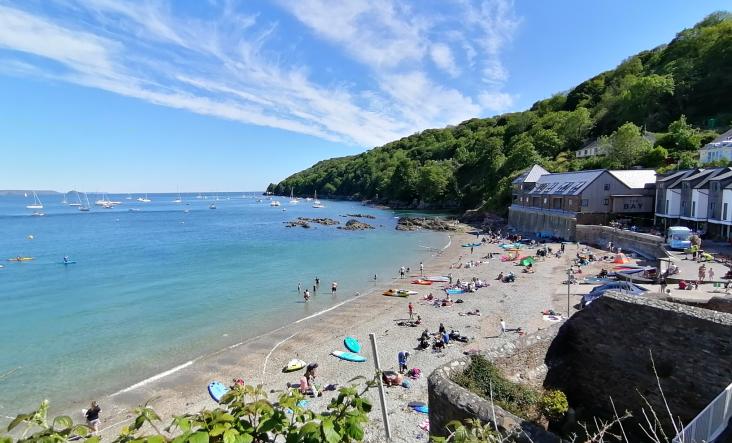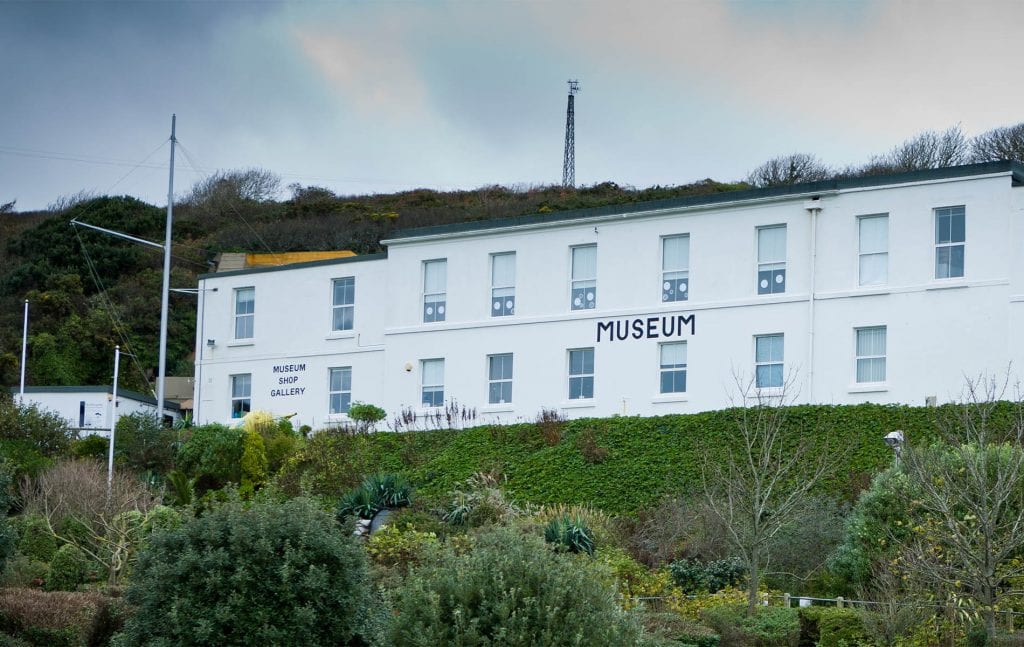Sitting on the quayside in Fowey, watching the ferry zig-zag its way between boats across the wide harbour to Polruan, is one of those things visitors love to do. It’s a view that has inspired artists and writers for many years and draws people back every summer.
From here the view out of the harbour mouth, guarded by St Catherine’s Castle on the right and the Medieval blockhouse at Polruan on the eastern side, is usually one of shimmering water and sailing boats. But once in a while the sails part and from nowhere a huge metal clad ship noses its way up channel to the docks hidden beyond the town.
It reminds people that Fowey is still a working port, its deep harbour serving Cornwall’s China Clay industry, taking white gold from here to ports far and wide. A boat trip upriver, passing the car ferry over to Bodinnick, reveals the docks, situated 2kms from the harbour entrance, where clay is brought from the St Austell area by lorry or train. The river bends to the left as it passes the waterside community at Mixtow, the boat-houses a reminder that the best way to reach these secluded residences is by boat.
The railway line hugs the river as it heads upstream past Sawmills Studio, where musicians like Supergrass, Oasis and the Stone Roses have recorded classic albums. Golant is the next community we come to, where Encounter Cornwall operate canoe trips from, a great way of exploring the river and its wooded creeks. Sitting on the Saint’s Way walking route, the village has a pub and, at the top of the hill, a church dedicated to St Samsom, one of the areas earliest tourists, he came here from Wales in the 6th Century.
Leaving Golant the river widens below St Winnow Point where the Lerryn River joins it. The mile or so of water running up to the village of Lerryn is only navigable at high tide, the woods either side thought to have been the inspiration for the Wild Wood in ‘Wind in the Willows’. The woods are full of good walks on both sides. The northern bank leading up to St Winnow where a church dedicated to the saint sits beside the Fowey River, now a large expanse of mud for much of the time.
Above St Winnow the valley closes in and the river meanders between mudflats and water meadows to the ancient Cornish capital of Lostwithiel. Even on a hightide it’s difficult to reach here by boat now, but occasionally springtides allow you to venture all the way up. In Medieval times this was an important port, but the tin mines that exported from here were the cause of the silting up of the river, as has happened on many other rivers on Cornwall’s south coast. Today the town is a pleasant place to wander around with plenty of antique shops to visit and some good places to eat.
Restormel Castle, a mile or so up river, was built on the site of a Norman Castle in the 13th Century. The Res in its name denotes a ford, as it does at Respryn Bridge a bit further up river. Lying just below the National Trust’s Lanhydrock House, there are great walks here alongside the Fowey River and up through the parkland to the house. Another path follows the drive from the house to the mainline railway station at Bodmin Parkway where you may also see steam trains from the Bodmin and Wenford Railway.
The river now enters the broad Glynn Valley, sharing it with the A38 trunk road and the railway, which runs along its southside crossing several large viaducts as it heads out of Cornwall. At Two Waters Foot (near Trago Mills) the Loveny River joins, running down from the pretty village of St Neot on the edge of Bodmin Moor. Soon the Fowey will turn to head up onto the moor itself, which it does at Golitha. Here the granite rocks of the upland region meet the softer slates, creating a steep-sided valley of pools and waterfalls amongst the woodland.
Once on the open moor, the river runs through Draynes Valley. Back in the early 70’s there were plans to flood this whole valley as a reservoir, but in the end they chose to create Coliford a mile or so to the west. At the top end of the valley the A30 crosses the river just before the village of Bolventor, home to Jamaica Inn. You are now in one of the wildest parts of Cornwall and the source of the river isn’t far away. Only walkers who feel confident of navigating across open moorland should continue north of Jamaica Inn, following in the footsteps of Joss Merlyn, into a boggy featureless landscape below Cornwall’s highest peak, Brown Willy.


